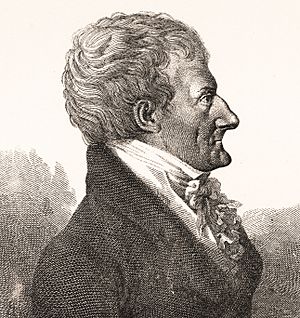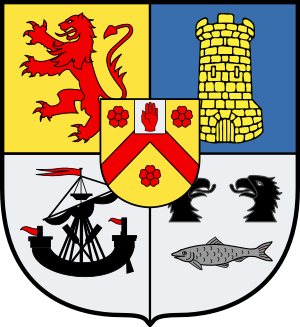Rutger Macklean facts for kids
Quick facts for kids
Rutger Macklean
|
|
|---|---|
 |
|
| Born | July 28, 1742 |
| Died | January 14, 1816 (aged 73) |
| Title | Friherre |
| Parent(s) | Rutger Macklean |
| Relatives | David Makeléer, grandfather |
Rutger Macklean (born July 28, 1742 – died January 14, 1816) was an important Swedish person. He was a lawyer, a military officer, a politician, and a landowner. He is most famous for helping to change how land was farmed in Sweden. His ideas led to big farms that could grow a lot more food.
Contents
Rutger Macklean's Life
Rutger Macklean was born on July 28, 1742, at Ström Manor in Sweden. His parents were Baron Rutger Macklier and Vilhelmina Eleonora Coyet.
He went to Lund University in 1757 and finished his law degree in 1759. After that, he worked at a high court. He also had a military career, becoming a sergeant in 1763 and later a captain in the Swedish Army by 1782. His brother, Gustaf Macklean, was also a senior military officer.
Changes at Svaneholm Castle
In 1782, Rutger Macklean inherited Svaneholm Castle and its large estate. The estate was about 8,500 acres. Back then, land was often divided into many small, narrow strips. About 40 farmers lived in four villages on the estate. Each farmer had the right to work many strips of land. However, many of these strips were too far away to be farmed properly. This meant that a lot of land was not used, and the farms didn't produce much food.
Macklean decided to make big changes. He had the land measured and divided into 75 larger farms. He built a new house and barn on each farm. He also built roads to connect them. Farmers who moved to these new farms found they could grow more crops on less land. He also brought in new tools and taught the farmers how to grow better crops.
It was not easy. The farmers didn't like the changes at first, and Macklean faced money problems. But he managed to put his plans into action in just a few years. His way of dividing land became law in a part of Sweden called Scania in 1802. Later, in 1827, similar land reform laws were made for all of Sweden. These changes helped Sweden's farming become much more efficient.
In 1812, Macklean became a member of the Royal Swedish Academy of Sciences. He also joined the Royal Swedish Academy of Agriculture and Forestry. He passed away at Svaneholm Castle in 1816 and is buried in Skurup Church.
About the Macklean Name
The family's last name was first spelled "Mackleir." In 1783, it changed to "Mackeleir." When Rutger and his brother became nobles, it changed back to "Macklier." Later, it changed again to "Macklean." People are not completely sure if the family came from Scotland or from Holland.
See also
- Solskifte
Related reading
- Sölve Göransson (1961) Regular Open-Field Pattern in England and Scandinavian Solskifte



